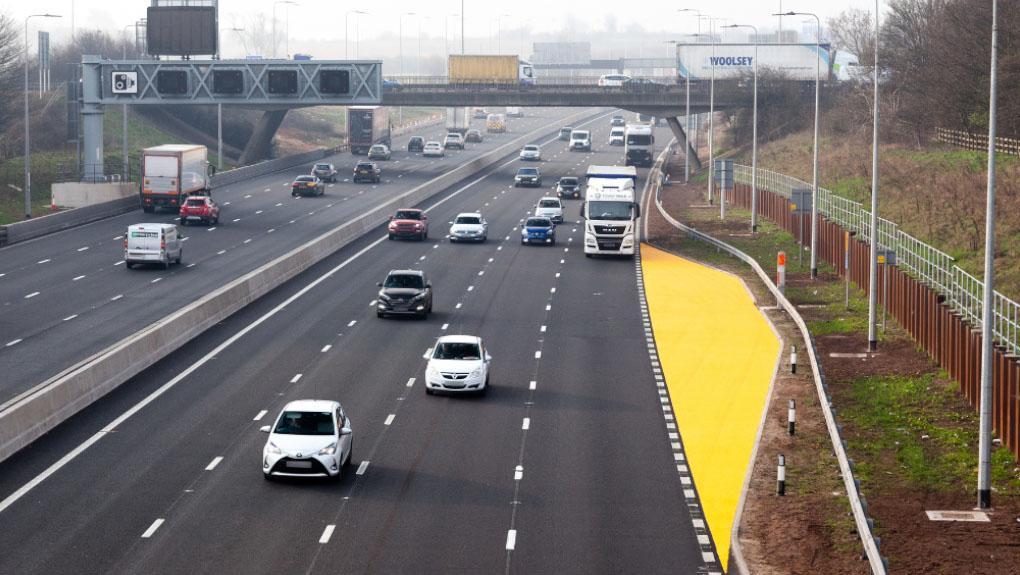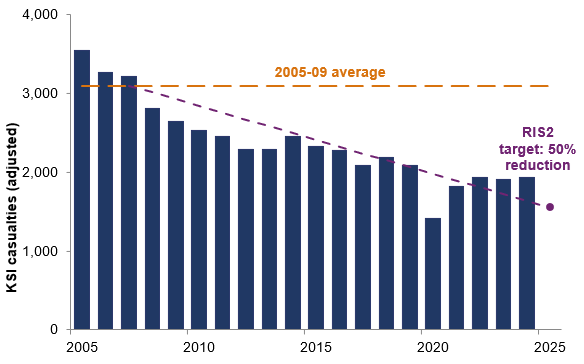
In our last annual assessment of safety on the strategic road network (SRN), published in February this year we reported it’s improbable National Highways would achieve its RIS2 safety target: to reduce the number of people killed or seriously injured on the SRN by 50% by the end of 2025, compared to a 2005-2009 average baseline
In this blog, I go through the latest available data to update on National Highways’ progress, ahead of our next safety report in March 2026.
Killed or seriously injured casualties
In September 2025 the Department for Transport published its latest annual road casualty statistics, which covered 2024. These figures are released nine months after the end of the reporting year so the Department can validate the data and so ensure accuracy of the final statistics.
These latest data show that 1,931 people were killed or seriously injured (KSI) on the SRN in 2024. This is 38% below the baseline, which means that National Highways needs to achieve a further reduction of 12 percentage points (381 KSI casualties) if it is to achieve its target of a 50% reduction by the end of 2025.
Chart: Number of people killed or seriously injured on the strategic road network, 2005 to 2024

The latest figures confirm that it is now almost certain the target will not be met.
There were 23 (1%) more people killed or seriously injured on the SRN in 2024 than in 2023. Over the same period, traffic on the SRN also increased by 1%. As a result, the KSI casualty rate was unchanged in the most recent year, at 20 such casualties per billion vehicle miles travelled. Excluding 2020 and 2021 (when fewer people were travelling because of COVID-19), this is the equal lowest casualty rate recorded on the SRN.
But even if National Highways does not meet its target for the end of 2025, it is important that the company continues to do all it reasonably can to reduce casualties by as much as possible.
Therefore, in ORR we continue to hold National Highways to account for delivering its plans to improve safety for road users, and we will provide a more detailed assessment in our next annual safety report that is due to be published by March 2026.
This will also include an update on our ongoing work to assess the effectiveness of safety systems on smart motorways, and National Highways’ evaluation of its action plan to reduce the duration and frequency of live lane stops on smart motorways.


